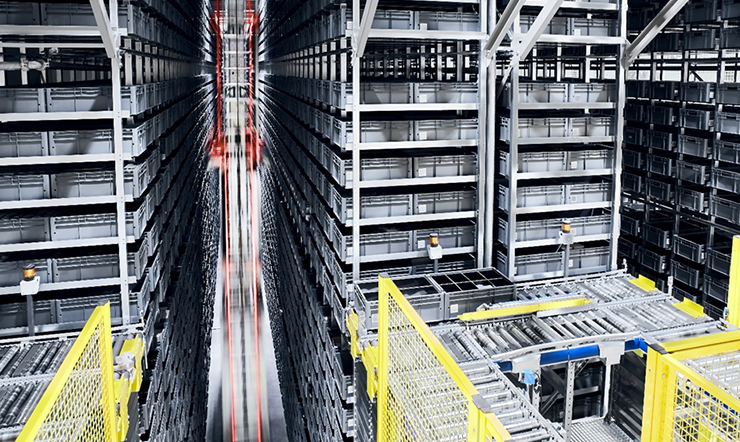In the competitive arena of the manufacturing industry, operational efficiency isn’t just a goal—
it’s a necessity for survival and success. A key element of this efficiency often lies within the
warehouse, where streamlined operations can significantly impact productivity, cost savings,
and ultimately, customer satisfaction. For manufacturers aiming to achieve high performance,
warehouse optimization is paramount.
This blog outlines essential best practices for maximizing productivity in warehouse operations
tailored specifically for the manufacturing sector.
Embracing Technology for Smarter Operations
The adoption of cutting-edge technology is critical for modernizing warehouse operations in the
manufacturing industry. Implementing a Warehouse Management System (WMS) can
revolutionize inventory management, allowing for real-time tracking and more accurate
forecasting.
Automation technologies, including robotics and automated storage and retrieval systems
(ASRS), can enhance efficiency, reduce human error, and allow staff to focus on more complex
tasks. By leveraging technology, manufacturers can achieve a seamless flow of goods, from raw
materials to finished products.
Lean Inventory: The Backbone of Efficiency
Adopting lean inventory management practices helps manufacturers reduce waste, optimize
storage costs, and improve workflow. Techniques such as just-in-time (JIT) inventory ensures
materials are only received as needed, reducing excess stock and freeing up valuable
warehouse space.
Regular inventory audits and embracing inventory reduction strategies can streamline
operations, ensuring manufacturers remain agile and responsive to market demands.
Optimizing Warehouse Layout for Peak Performance
An optimized warehouse layout is key to enhancing efficiency. Strategic placement of highdemand items near packing and shipping areas can minimize travel time and speed up the order fulfilment process.
Additionally, considering ergonomic principles in the layout design can improve worker safety
and productivity. By regularly evaluating and adjusting the layout to meet changing production
needs, manufacturers can maintain an efficient and effective warehouse operation.
Investing in Your Workforce
A well-trained and motivated workforce is essential for achieving operational excellence.
Manufacturers should invest in ongoing training programs that cover the latest warehouse
technologies and best practices.
Fostering a culture of safety, recognition, and continuous improvement can motivate employees
to perform at their best. Engaged workers are not only more productive but also contribute to a
positive and dynamic working environment.
Continuous Improvement as a Strategic Imperative
For manufacturers, the journey toward warehouse optimization is ongoing. Instilling a culture of
continuous improvement requires regular assessment and refinement of processes.
Engaging employees at all levels in the pursuit of operational excellence can uncover innovative
solutions and drive efficiency. By making continuous improvement a core aspect of their
operational strategy, manufacturers can adapt to evolving industry challenges and
opportunities.
Safety and Ergonomics: Prioritizing the Human Element
In the manufacturing industry, warehouse safety and ergonomics are crucial for maintaining
high productivity levels. Implementing safety protocols, ergonomic equipment, and regular
training can minimize workplace injuries and improve operational efficiency.
A focus on creating a safe and comfortable work environment not only demonstrates a
commitment to employee well-being but also reduces downtime and increases productivity.
Data-Driven Decision Making
In today’s data-rich environment, leveraging analytics in warehouse operations can provide
manufacturers with a competitive edge. Analyzing data on inventory levels, throughput times,
and worker productivity can identify bottlenecks and opportunities for improvement. By making
informed decisions based on data insights, manufacturers can optimize warehouse operations
and enhance overall efficiency.
Conclusion
For the manufacturing sector, streamlining warehouse operations is a strategic lever for
boosting productivity, reducing costs, and enhancing customer satisfaction. By embracing
technology, lean inventory management, optimized layouts, workforce development,
continuous improvement, safety prioritization, and data-driven decision-making,
manufacturers can achieve a more efficient and effective warehouse operation. These best
practices not only support operational excellence but also position manufacturers for sustained
success in the competitive marketplace.






